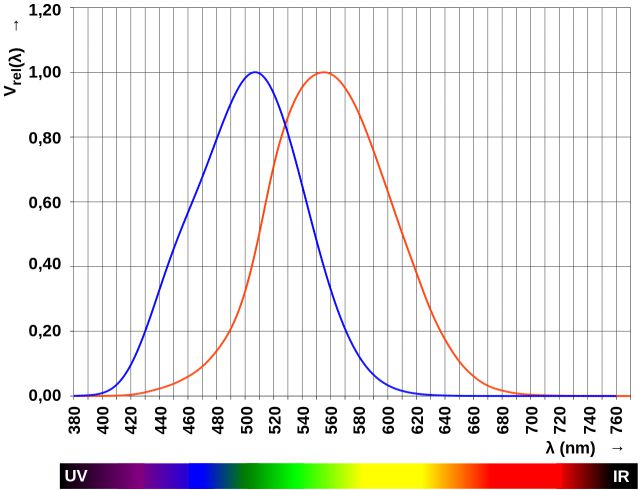In this article on aquarium LEDs we have shown you how to calculate the illuminance for a conversion from old-fashioned lamps like T5 or T8 tubes, HQI burners, halogen lamps or compact fluorescent tubes to LED, to enable you to roughly compare the intensity of those various lights. The standard performance parameters for conventional bulbs, given in watts per liter, are converted to lumens per liter, the common performance measurement for LED lighting. The term lumen has hardly been used in the past in an aquaristic context, but as aquarium keepers we should nevertheless start dealing with this topic before purchasing e. g. a new LED light. We will explain in the following what that term actually means
What’s lumen anyway?
The unit lumen (abbreviated as lm) defines the so-called luminous flux emitted by a light source. The evaluation of this radiation incorporates the human perception of brightness. Now, this perception of brightness is strongly dependent on certain wavelengths, i. e. colors.

In a wavelength spectrum of electromagnetic radiation, humans perceive the range of about 380 to 750 nanometers (nm) as visible light. Depending on the light color respectively the light spectrum, brightness perception varies - it is not constant. We perceive yellow and green spectra around the area of about 560 nm as comparatively very bright. In the blue (up to 490 nm) and red (from 650 nm) range, brightness perception decreases significantly. In some spectra it is less than 10%. The following graph shows the so-called wavelength-dependent sensitivity curve of the human eye (by day and night).

Luminous efficiency curve for photopic and scotopic vision blue = scotopic (by night), red = photopic (by day). Copyright: HHahn - own creation, license: CC BY-SA 3.0.
In fact, indicating a lamp’s brightness in lumens has proven to be significantly more precise than stating it in watts. The rule of thumb of watts per liter (introduced in 1979 by Paffrath) that has been conventionally used categorizes the light requirements of various aquatic plants in an aquarium. With modern aquarium lighting equipped with LEDs it is no longer applicable. For those who still prefer translating the watts-per-liter rule into a corresponding lumens-per-liter one, please refer to the article on Aquarium LED lighting, in which we describe in detail how to interpret the indication of watts into lumens. As an overview, we have summarized the parameters in the following table:
- Low light spectrum: previously approx. 0.25 watt/liter --> transferred to today's LED technology corresponds to approx. 15 lumens/liter.
- Medium light spectrum: previously approx. 0.5 watt/liter --> transferred to today's LED technology corresponds to approx. 30 lumens/liter.
- Strong light spectrum: previously approx. 1 watt/liter --> transferred to today's LED technology corresponds to approx. 60 lumens/liter.